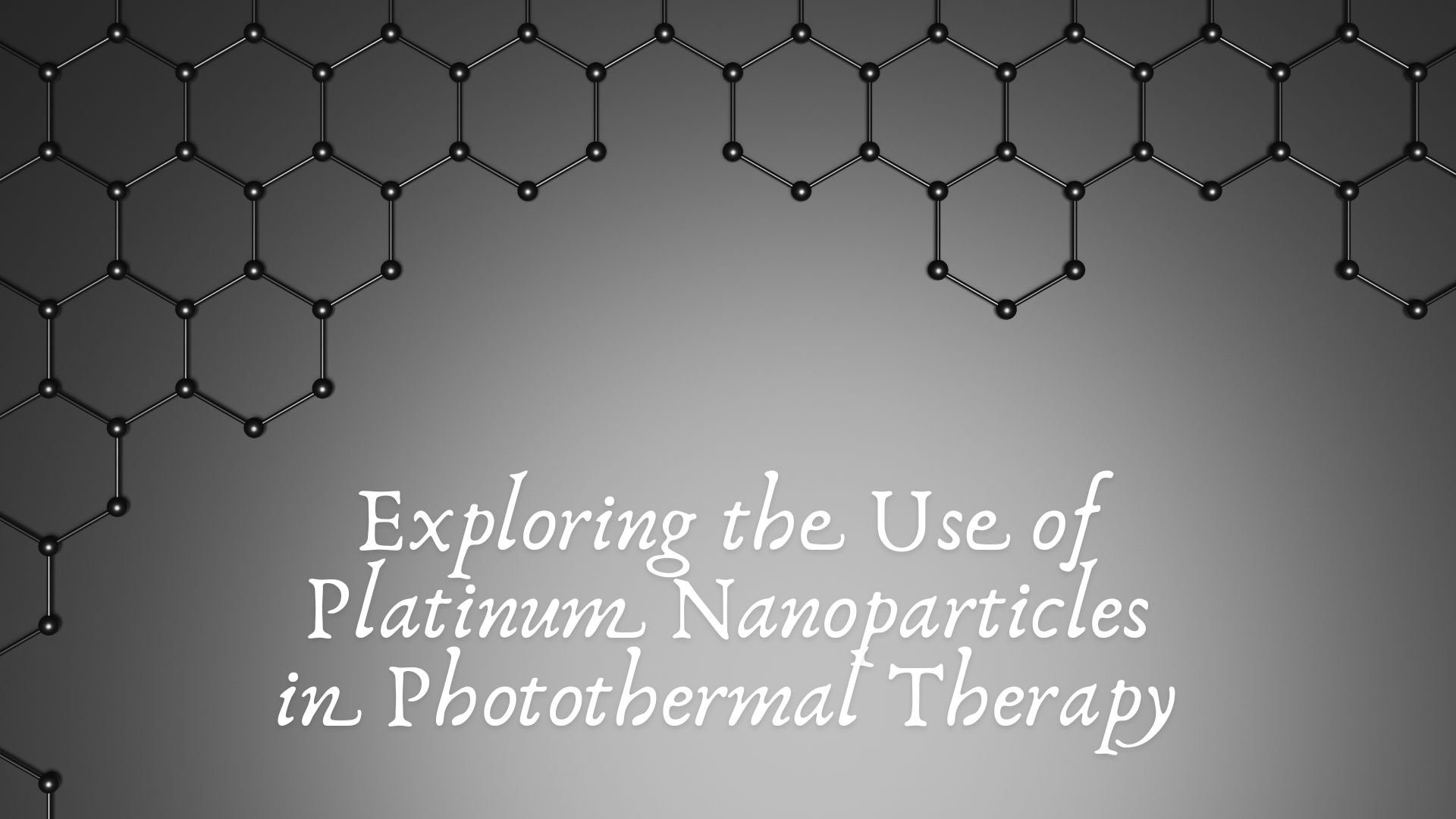Platinum nanoparticles (PtNPs) have emerged as a fascinating nanomaterial in the field of nanomedicine, particularly in the context of photothermal therapy (PTT). This innovative therapeutic approach uses light energy to generate localized heat for the destruction of cancer cells, offering a minimally invasive and highly targeted alternative to conventional therapies. In this article, we explore the critical role of platinum nanoparticles in photothermal therapy, their unique advantages, mechanisms of action, current research trends, and potential future applications.
Understanding Photothermal Therapy
Photothermal therapy involves the conversion of light, usually in the near-infrared (NIR) spectrum, into heat by photothermal agents such as nanoparticles. These agents are introduced into the body and accumulate preferentially in tumor tissues due to the enhanced permeability and retention (EPR) effect. Upon NIR irradiation, the agents absorb light and rapidly convert it into heat, elevating the local temperature and causing irreversible damage to cancerous cells while sparing healthy tissue.
Why Platinum Nanoparticles?
While gold and carbon-based nanoparticles have long dominated the PTT landscape, platinum nanoparticles are now drawing increasing attention due to their:
High Photothermal Conversion Efficiency
PtNPs exhibit exceptional optical absorption in the NIR range, making them effective at converting light into heat.
Catalytic Properties
Beyond photothermal effects, platinum’s inherent catalytic activity can facilitate the decomposition of endogenous hydrogen peroxide (H₂O₂) into oxygen. This oxygen generation is particularly beneficial in the hypoxic (low oxygen) environments of tumors, potentially enhancing treatment efficacy.
Chemical Stability and Biocompatibility
Platinum is highly stable under physiological conditions and exhibits relatively low toxicity when appropriately surface-modified.
Multifunctionality
PtNPs can be engineered for multimodal applications, including PTT, imaging (e.g., CT or MRI), and drug delivery.
Mechanism of Action in Photothermal Therapy
Platinum nanoparticles work through several key mechanisms in PTT:
Accumulation in Tumor Tissue
Once injected, PtNPs passively accumulate in tumors via the EPR effect or actively via targeting ligands attached to their surfaces.
Light Absorption and Heat Generation
When exposed to NIR light, the PtNPs absorb photons and convert them into thermal energy, raising the temperature locally.
Cellular Damage and Apoptosis
The generated heat disrupts cellular structures, denatures proteins, and induces apoptosis or necrosis in cancer cells.
Synergistic Effects with Other Therapies
PtNPs can also be combined with chemotherapy or radiation therapy to produce synergistic anti-cancer effects. Some studies suggest that platinum can sensitize tumor cells to chemotherapy agents like cisplatin.
Recent Research Developments
Several recent studies have highlighted the potential of PtNPs in PTT:
Hybrid Nanocomposites
Researchers are developing PtNPs combined with materials like graphene oxide, mesoporous silica, or gold to enhance photothermal efficiency and enable multifunctionality.
Surface Functionalization
Surface modifications using polymers like polyethylene glycol (PEG) or targeting moieties such as folic acid improve biocompatibility and active targeting capabilities.
In Vivo Studies
Animal studies have shown significant tumor shrinkage and minimal side effects using PtNP-mediated PTT, bolstering the case for human clinical trials.
Imaging Integration
PtNPs have been explored as contrast agents in computed tomography (CT) and magnetic resonance imaging (MRI), allowing simultaneous diagnosis and treatment—a concept known as “theranostics.”
Advantages Over Other Nanoparticles
While gold nanoparticles are widely used in PTT, PtNPs offer unique advantages:
- Higher melting point and durability under laser irradiation
- Catalytic oxygen generation reduces tumor hypoxia
- Potential for combined chemo-photothermal therapy
- Intrinsic CT imaging capabilities
Challenges and Limitations
Despite their promise, several challenges remain:
Cost and Scalability
Platinum is an expensive and rare metal, potentially limiting its large-scale application.
Toxicity and Clearance
Although generally biocompatible, concerns remain about the long-term fate and potential toxicity of PtNPs in the human body. Strategies for enhancing renal clearance or biodegradability are under development.
Regulatory and Clinical Translation
Like many nanomedicines, PtNPs face regulatory hurdles before reaching clinical application. Long-term safety data and large-scale clinical trials are necessary.
Future Outlook
The future of platinum nanoparticles in photothermal therapy is bright, with ongoing research focusing on:
Personalized Nanomedicine
Tailoring PtNPs for individual tumor profiles to maximize efficacy and minimize side effects.
Combination Therapies
Integrating PTT with immunotherapy, gene therapy, or CRISPR-based treatments for comprehensive cancer care.
Smart Nanoplatforms
Developing stimuli-responsive PtNPs that release drugs or activate only in specific tumor environments.
Green Synthesis Methods
Employing eco-friendly synthesis approaches to reduce environmental impact and improve scalability.
Conclusion
Platinum nanoparticles represent a cutting-edge innovation in the realm of photothermal therapy, offering unparalleled photothermal efficiency, catalytic capabilities, and multifunctional applications. As research advances and nanotechnology becomes more refined, PtNPs could become central to next-generation cancer treatments. With ongoing developments in synthesis, surface engineering, and clinical translation, platinum nanoparticles hold the potential to revolutionize not just photothermal therapy but the entire landscape of precision oncology.






